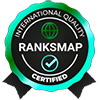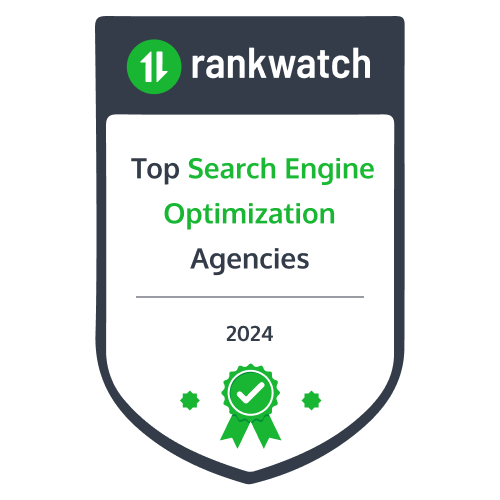Understanding the Power of SEO in Winning Competition Online
In today’s digital landscape, winning the competition online requires a deep understanding of the power of SEO (Search Engine Optimization). With millions of websites vying for attention, it is crucial to implement effective SEO strategies and techniques to stand out from the crowd.

SEO is the process of optimizing a website to improve its visibility and ranking in search engine results. By strategically incorporating relevant keywords, creating high-quality content, and optimizing website structure, businesses can increase their chances of being discovered by their target audience.
The importance of SEO in winning online competition cannot be overstated. When implemented correctly, it can drive organic traffic to a website, increase brand visibility, and ultimately lead to higher conversion rates. By appearing on the first page of search engine results, businesses have a greater chance of attracting potential customers and outshining their competitors.
Furthermore, SEO allows businesses to stay ahead in the ever-evolving digital landscape. As search engines continuously update their algorithms, staying up-to-date with SEO best practices ensures that your website remains relevant and competitive.
To win the online competition through SEO, it is essential to employ various strategies such as keyword research and optimization, on-page optimization (meta tags, headings), off-page optimization (backlink building), and technical optimization (site speed and mobile-friendliness).
By harnessing the power of SEO effectively, businesses can gain a significant advantage over their competitors in the online arena. It not only helps improve visibility but also establishes credibility and trust among users. So don’t underestimate the power of SEO – embrace it as an integral part of your digital marketing strategy to emerge victorious in today’s highly competitive online landscape.
Step 1: Conducting Comprehensive Keyword Research to Identify Targeted Opportunities
In order to maximize the effectiveness of your copywriting efforts, conducting comprehensive keyword research is a crucial first step. By identifying targeted opportunities through keyword research, you can ensure that your content is optimized for search engines and reaches the right audience.
Keyword research involves analyzing popular search terms and phrases that are relevant to your industry or niche. This process helps you understand what your target audience is searching for and how they are searching for it. By uncovering these insights, you can tailor your copywriting strategy to align with their needs and preferences.
Competitor analysis is another important aspect of keyword research. By examining the keywords that your competitors are targeting, you can gain valuable insights into their strategies and identify potential gaps or opportunities in the market. This allows you to differentiate yourself and create unique content that stands out from the competition.
Long-tail keywords play a significant role in keyword research as well. These are longer, more specific phrases that often have lower search volume but higher conversion rates. By incorporating long-tail keywords into your copywriting strategy, you can target a more niche audience and increase the likelihood of attracting qualified leads or customers.
Once you have identified relevant keywords through thorough research, it’s essential to focus on keyword ranking and optimization. This involves strategically incorporating these keywords into your content in a natural and meaningful way. By optimizing your copywriting with targeted keywords, you increase the chances of ranking higher in search engine results pages (SERPs) and driving organic traffic to your website.
Conducting comprehensive keyword research sets the foundation for effective copywriting by helping you understand what your target audience is searching for, analyzing competitor strategies, leveraging long-tail keywords, and optimizing content for improved visibility in search engine rankings.
Step 2: Optimizing On-Page Elements for Maximum Visibility and User Experience
In the ever-evolving world of SEO, optimizing on-page elements is crucial for achieving maximum visibility and enhancing user experience. By strategically optimizing key on-page elements, such as meta tags, content, header tags, and URL structure, you can significantly improve your website’s search engine rankings and attract more organic traffic.
Meta tags optimization plays a vital role in providing search engines with relevant information about your web pages. By crafting compelling meta titles and descriptions that accurately reflect the content of each page, you can increase click-through rates and improve your website’s visibility in search engine results.
Content optimization involves creating high-quality, relevant, and engaging content that not only appeals to users but also incorporates targeted keywords to enhance search engine visibility. By conducting thorough keyword research and strategically placing keywords throughout your content in a natural manner, you can improve your website’s ranking for relevant search queries.
Optimizing header tags (H1-H6) helps organize the structure of your content and provides both users and search engines with a clear understanding of the hierarchy of information on your web pages. Properly optimized header tags make it easier for search engines to crawl and index your content while improving readability for users.
URL structure optimization involves creating clean, concise, and keyword-rich URLs that are easy to read by both humans and search engines. A well-structured URL not only improves user experience but also provides valuable signals to search engines about the relevance of your web pages.
By implementing these on-page optimization techniques effectively, you can enhance both the visibility of your website in search engine results pages (SERPs) as well as provide a seamless user experience that keeps visitors engaged.
Step 3: Building High-Quality Backlinks to Boost Authority and Trustworthiness
Building high-quality backlinks is a crucial step in boosting the authority and trustworthiness of your website. By implementing effective backlink building strategies, you can enhance your website’s visibility, improve search engine rankings, and attract more organic traffic.
One effective strategy is guest blogging outreach. By reaching out to relevant websites or blogs in your industry and offering to write informative and valuable guest posts, you not only gain exposure to a wider audience but also have the opportunity to include backlinks to your own website within the content. This not only drives referral traffic but also signals to search engines that your website is reputable and trustworthy.
Another powerful technique is influencer collaborations. Partnering with influencers who have a strong online presence and a large following can significantly boost your backlink profile. By collaborating on content creation or hosting joint events, you can leverage their influence to secure high-quality backlinks from their websites or social media platforms.
Implementing various link building techniques such as broken link building, resource page outreach, or competitor analysis can also help you identify opportunities for acquiring authoritative backlinks from reputable sources.
Remember, the key to successful backlink building lies in focusing on quality rather than quantity. Seek out authoritative websites that are relevant to your niche and ensure that the links pointing back to your site come from trustworthy sources. By consistently implementing these strategies, you can strengthen your website’s authority, increase its visibility in search results, and ultimately drive more organic traffic.
Step 4: Creating Engaging and Shareable Content that Resonates with Your Target Audience
Creating content that is not only engaging but also shareable is crucial in today’s digital landscape. In order to capture the attention of your target audience and make a lasting impact, it is essential to understand what resonates with them.
The first step in creating engaging and shareable content is conducting a thorough audience analysis. This involves identifying your target demographic, understanding their interests, preferences, and pain points. By gaining insights into their motivations and aspirations, you can tailor your content to meet their specific needs.
Once you have a clear understanding of your target audience, it’s time to brainstorm content creation strategies that will resonate with them. This may involve storytelling techniques, incorporating visual elements such as images or videos, or utilizing interactive formats like quizzes or polls.
Remember, the key to creating engaging content lies in providing value to your audience. Whether it’s through informative articles, entertaining videos, or inspiring stories, make sure that your content offers something meaningful and relevant.
Additionally, optimizing your content for social sharing can significantly increase its reach. This can be achieved by incorporating social sharing buttons on your website or blog posts and crafting compelling headlines that encourage users to click and share.
By following these steps and consistently delivering high-quality content that resonates with your target audience, you can create a strong online presence and foster meaningful connections with your followers. So go ahead – start creating engaging and shareable content that leaves a lasting impression!
Step 5: Tracking Progress and Making Data-Driven Adjustments to Stay Ahead of the Competition
In today’s competitive digital landscape, staying ahead of the competition requires a strategic approach to SEO. Step 5 of this process involves tracking progress and making data-driven adjustments to ensure your SEO strategy is effective and adaptable.
![]()
One essential tool for tracking progress is SEO analytics tools. These tools provide valuable insights into website performance, keyword rankings, and user behavior. By monitoring key metrics such as organic traffic, bounce rates, and conversion rates, you can gain a comprehensive understanding of how your SEO efforts are performing.
Tracking keyword rankings is another crucial aspect of staying ahead in the search engine game. By regularly monitoring where your target keywords rank in search results, you can identify opportunities for improvement or potential threats from competitors. This information allows you to make informed decisions about adjusting your SEO strategy to maintain or improve your rankings.
Monitoring competitor activity is equally important in maintaining a competitive edge. Keeping an eye on what strategies and tactics your competitors are employing can provide valuable insights into industry trends and potential gaps in the market. By analyzing their keywords, content strategies, backlink profiles, and social media presence, you can identify areas where you can differentiate yourself or adjust your approach accordingly.
Once armed with this data-driven knowledge, it’s time to make adjustments to your SEO strategy. Whether it’s optimizing underperforming pages based on user behavior data or incorporating new keywords based on competitor analysis, adapting your approach ensures that you stay relevant and visible in search engine results.
Step 5 of tracking progress and making data-driven adjustments is crucial for staying ahead of the competition in today’s dynamic digital landscape. Utilizing powerful SEO analytics tools, tracking keyword rankings diligently, monitoring competitor activity closely, and adjusting your strategy accordingly will help ensure that you maintain a strong online presence and continue to drive organic traffic to your website.
Conclusion : Implement these Winning SEO Strategies to Outrank Competitors and Achieve Long-Term Success
In conclusion, implementing winning SEO strategies is crucial for businesses looking to outrank their competitors and achieve long-term success in the online landscape. Search engine optimization plays a pivotal role in driving organic traffic to websites, increasing visibility, and ultimately boosting conversions.
One of the key pillars of a successful SEO strategy is thorough keyword research. By identifying relevant keywords with high search volumes and low competition, businesses can optimize their content to target these specific terms effectively. This ensures that their website appears prominently in search engine results pages when users are actively searching for related products or services.
Content optimization is another essential aspect of SEO. By creating high-quality, informative, and engaging content that aligns with targeted keywords, businesses can improve their website’s relevance and authority in the eyes of search engines. This leads to higher rankings and increased organic traffic over time.
Additionally, building a strong backlink profile is crucial for outranking competitors. Acquiring quality backlinks from reputable websites signals to search engines that your website is trustworthy and authoritative. This can significantly impact your search engine rankings and overall visibility.
By implementing these winning SEO strategies – conducting thorough keyword research, optimizing content effectively, and building quality backlinks – businesses can position themselves ahead of their competitors in the digital landscape. With consistent effort and monitoring of performance metrics, long-term success in terms of increased organic traffic, higher rankings, and improved conversions can be achieved.




